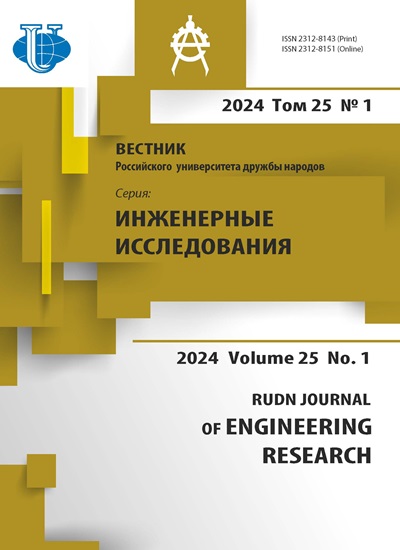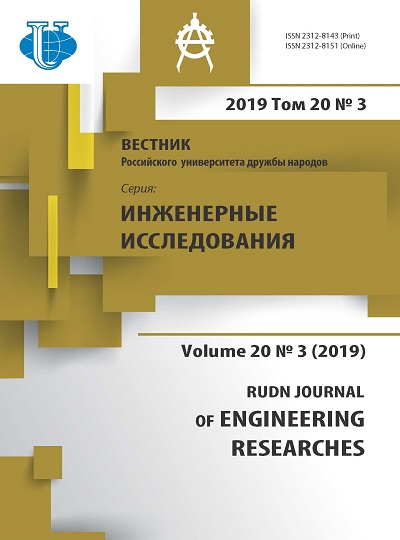Energy cost analysis to station keeping for satellite formation type “TerraSAR-X - TanDEM-X”
- Authors: Baranov A.A.1,2, Chernov N.V.1
-
Affiliations:
- Peoples’ Friendship University of Russia (RUDN University)
- Keldysh Institute of Applied Mathematics Russian Academy of Sciences
- Issue: Vol 20, No 3 (2019)
- Pages: 220-228
- Section: Aviation and rocket and space technology
- URL: https://journals.rudn.ru/engineering-researches/article/view/23374
- DOI: https://doi.org/10.22363/2312-8143-2019-20-3-220-228
Cite item
Full Text
Abstract
The maintenance of a given configuration of the satellite formation of the “TerraSAR-X - TanDEM-X” type is considered. It is assumed that the master satellite performs only maneuvers to maintain the working orbit, and the slave satellite performs identical maneuvers to maintain the working orbit and additionally performs maneuvers to maintain a given relative configuration of the group. For the working orbit of the master satellite, the dependence of the total characteristic velocity costs for maintaining a large semi-axis, eccentricity, inclination, and their various combinations on the maintenance accuracy is studied. The minimum limits of accuracy at which maneuvering is not required are set for each of the elements. This study is general in nature and allows future missions to be planned, providing the necessary trade-offs between the accuracy of maintenance and the total characteristic speed costs that increase as maintenance accuracy increases. Also, a study of the energy costs of relative maintenance, provided that the engines of the master and slave satellites operate almost the same. It is shown that the relative maintenance requires significantly lower fuel costs, even with the accuracy required in the project. The software product developed for this study is of universal application and will be used to investigate the cost of maintaining a more complex system of four satellites, in which three satellites rotate relative to the base satellite.
About the authors
Andrey A. Baranov
Peoples’ Friendship University of Russia (RUDN University); Keldysh Institute of Applied Mathematics Russian Academy of Sciences
Author for correspondence.
Email: nikita145@yandex.ru
leading researcher at KIAM RAS, Professor at the Department of Mechanics and Mechatronics of Institute of Space Technologies at Academy of Engineering in RUDN University, PhD (Physics and Mathematics)
6 Miklukho-Maklaya St., Moscow, 117198, Russian Federation; 4 Miusskaya Sq., Moscow, 125047, Russian FederationNikita V. Chernov
Peoples’ Friendship University of Russia (RUDN University)
Email: nikita145@yandex.ru
senior lecturer at the Department of Mechanics and Mechatronics of Institute of Space Technologies at Academy of Engineering in RUDN University
6 Miklukho-Maklaya St., Moscow, 117198, Russian FederationReferences
- Marec JP. Optimal Space Trajectories. Studies in Astronautics. 1979;1:329.
- Jones JB. Optimal Rendezvous in the Neighborhood of a Circular Orbit. Journal of the Astronautical Sciences. 1976;XXIV(1):55–90.
- Baranov AA. Numerical and analytical determination of the parameters of multi-turn rendezvous maneuvers spacecrafts in close nearly circular non-complanar orbits. Space research. 2008;46(5):430–439. (In Russ.)
- Damario L, Bollman W, Lee W, Roncoli R, Smith J. Mars Orbit Rendezvous Strategy for the Mars 2003/2005 Sample Return Mission. AAS/AIAA Astrodynamics Specialist Conference (Girwood, Alaska, 16–19 August 1999). Paper AAS 99-306. pp. 1–19.
- Ocampo C, Guinn J, Breeden J. Rendezvous options and dynamics for the Mars sample return mission. AAS/AIAA Astrodynamics Specialist Conference. Paper AAS 01-415. 2001. pp. 1–20.
- Baranov AA, Baranov AA. Algorithm of calculation of parameters of maneuvers of formation of satellite systems. Space researches. 2009;47(3):256–262. (In Russ.)
- Razoumny VYu, Baranov AA. Planning for on-orbit servicing of various satellite systems. RUDN Journal of Engineering Researches. 2016;17(4):16–26. (In Russ.)
- Boutonnet A, Baranov AA, Martinot V, Escudier B, Noailles J. Optimal Small Formation Flying Initialization in Circular Orbit. Proceedings of the 17th International Symposium on Space Flight Dynamics (16–20 June 2003). Moscow; 2003. pp. 83–96.
- Boutonnet A, Martinot V, Baranov A, Escudier B. Optimal Invariant Spacecraft Formation Deployment with Collision Risk Management. Journal of Spacecraft and Rockets. 2005;42(5):913–920.
- Mozhaev GV. Decision of some problems of optimization of processes of relative correction of motion of satellite systems. Part I. Space researches. 2001;39(5): 518–530. (In Russ.)
- Mozhaev GV. Decision of some problems of optimization of processes of relative correction of motion of satellite systems. Part. II. Space researches. 2001; 39(6): 634–647. (In Russ.)
- Krieger G, Moreira A, Fiedler H, Hajnsek I, Eineder M, Zink M, Werner M. TanDEM-X: A Satellite Formation for High Resolution SAR Interferometry. FRINGE 2005 Workshop, ESA/ESRIN (Frascati, Italy, 28 November – 2 December 2005). Available from: http://earth.esa.int/fringe2005/proceedings/papers/382_krieger.pdf
- Krieger G, Moreira A, Fiedler H, Hajnsek I, Werner M, Younis M, Zink M. TanDEM-X: A Satellite Formation for High-Resolution SAR Interferometry. IEEE Transactions on Geoscience and Remote Sensing. 2007; 45(11):3317–3341.
- Edelbaum TN. Minimum Impulse Transfer in the Vicinity of a Circular Orbit. Journal of the Astronautical Sciences. 1967;XIV(2):66–73.
- Baranov AA. The maneuvering of the spacecraft in the vicinity of a circular orbit. Moscow: Sputnik+ Publ.; 2016. (In Russ.)
- Baranov AA. An Algorithm for Calculating the Parameters of Multi-orbit Maneuvers in Remote Guidance. Cosmic research. 1990;28(1):69–76. (In Russ.)
- Baranov AA. Geometric Solution of the Problem of a Rendezvous on Close Nearly Circular Coplanar Orbits. Space research. 1989;27(6):808–816. (In Russ.)
















